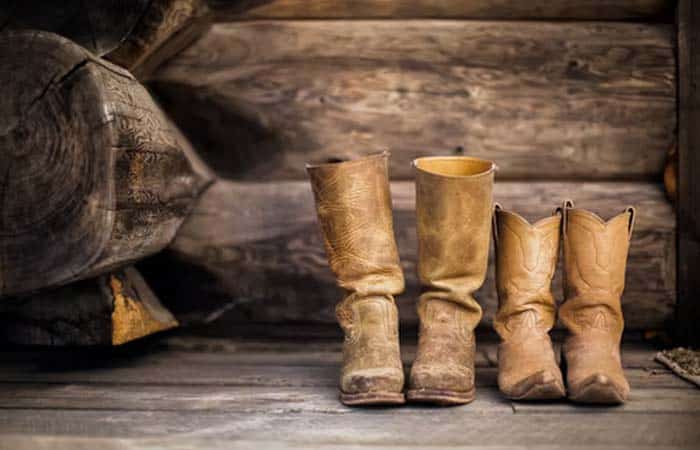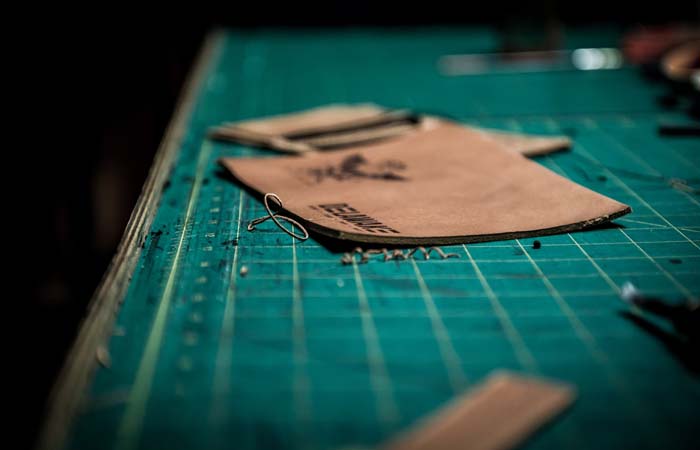Believe it or not, some of us want to shrink leather on various items from car seats to shoes.
Not many of us think about shrinking leather. The product, when finished, is typically a finished product and cannot be played with.
But that’s not the whole truth. There are different methods for shrinking leather, it can be tricky with more oversized items, but we can take a look and describe how it’s done.
Shrinking Leather Shoes
Table of Contents

The truth is if you are in the know, you never buy a pair of shoes that fit your feet. I hear you screaming “What,” but it’s true if you buy a pair of shoes a half size too big, then you can use insoles that padded out the shoe and lift your feet into the correct perfect fit.
Sounds Crazy? I tend to agree with you but, I’m telling you the truth.
If you are well-heeled, you might be wearing bespoke shoes. Try not to get bespoke and customized confused. Bespoke is meant for you as an individual.
If your shoes are bespoke, you will have received a shoe tree that is the same size as your foot that fits the shoe perfectly. This is meant to be used with the shoes when you are not wearing them to keep the shape.
However, over time and I am talking years, the leather on the shoes will stretch, and the shoes may become baggy to some extent. If you wear bespoke shoes, you are a particular type of individual and will notice small changes.
Anyway, if you take your shoes to professional shoe repairs, they may know how to steam your shoes back into shape and shrink them simultaneously.
This is where the shoe tree comes in. You can only work this process with a shoe tree.
First, the shoe is cleaned and stripped of any debris, such as polish.
Second, the shoe is wrapped in a wet towel, and hot domestic steam iron is introduced.
The idea is that you iron the leather outwardly to spread the leather down towards the welts of the shoe.
Then carefully apply heat and steam generated from the wet towel and not the iron into the welts of the shoe.
The advantage of this process is you can target the areas needing to be addressed, which may not be the whole shoe, and most of the shrinking needs to occur across the broadest part of the foot.
It’s a tricky proposition and not something I recommend you try at home. But, it works, and if you have an old pair of shoes that you miss wearing, I guess you could give it a go.
Hot Water Shrinking
This process is quite dangerous and one used as part of the tanning process and mainly used for larger sheets of leather.
It will be a lengthy process if you have a large leather garment you want to try this on. Say if you would like to shrink a leather jacket to achieve a better fit.
You will need to strip the lining out of the jacket. Leather and synthetic materials will shrink at different rates. So it’s essential the lining is completely removed.
You will need a tub or bath of rolling boiled water. We will fully immerse the jacket into the boiling water for maybe two to three seconds.
I cannot stress enough this process is dangerous for experienced folks who do this for a job. Please take care and pay attention.
Ok, you have immersed your jacket for the desired time now. Withdraw the jacket and let the jacket drain.
You may want to try and create some waving motion to dry the garment faster.
This process is hit and miss as you are trying to shrink the leather garment to a size that is a tall order for anyone.
When the garment is dry, you will have to fit it for size. With luck, the shrinking will have produced the desired effect. Clearly, you will need to stitch back the lining making minor adjustments.
Assuming the process did not need to be repeated, you will now need to dress the leather; dressing the leather is placing some of the oils back to keep the leather soft and waterproof.
Shrinking Leather With Alcohol
Allegedly this process works much better than just hot water giving the desired results.
This process is very much like the previous process of using hot water, but we will add alcohol to the water this time. Obviously, as stated previously, this is dangerous, and now with an increased risk of respiratory issues, PPE must be worn, including the correct face mask or respirator for this process.
The mixture of alcohol to water is 1 part water, one part alcohol 1:1 ratio. When the mixture is boiling, leave the alcohol and water to interchange their chemistry, then place the garment. Again the process is hit and miss and is best suited for a minor adjustment.
Again retrieve the garment after a few seconds in the boiling water and allow it to drain. When cool, you can hand squeeze the remaining moisture from the garment.
Follow the above steps and maybe use hydrophane as your dressing product. This can be purchased from a horse tack shop as a leather dressing, but it works well and restores softness to the leather with a slight sheen.
Leather Car Interiors
At some time, we have all enjoyed the luxury of a leather car interior, and the glorious smells are something to be cherished.
However, depending on your weight, those perfect leather seats can start to get a little baggy over time and tend to lose some of their appeal.
But worry not. A solution is available to shrink those baggy leather seats back to their original shape, so they look as if they have just left the showroom.
The truth is, if you have not guessed by now, leather can quickly shrink with heat. We have read the examples above of using a steam iron and wet towel and how hot water can be used.
So with a simple heat gun and a great deal of care and patience, we can tighten the bolsters or seat squabs and make your leather interior come back to life.
Ok, let’s get started. Like leather garments and shoes, it is always best to clean and clean like it is new before we start the process.
It’s essential to clean and remove any synthetic materials in a previous process.
Applying heat with a heat gun can be challenging to play around with your heat setting and distances, so you don’t scorch the leather.
Applying gentle heat in a circular or linear motion will be needed to spread the heat over the general area. Don’t rush this process, and it will be worth the results.
You will see the leather starting to tighten. It will be your judgment call as to when to stop. Overdoing it will not give a good look. Try to keep the appearance uniform and natural, just like the day it rolled out of the showroom.
This process is part of renovating your interior, so when complete, you will need to use a good cleaner with leather softener to restore the deaths to new conditions.
Not only is this process easy if you take your time, but it will also add value to your car at the time of sale.
Final Thoughts
Shrinking leather garments is a skilled profession, and I’m unsure of the results you can get trying this at home, except for tightening the leather on car seats.
However, with the proper precautions and PPE, this is something you can try yourself. For the first attempt, I don’t recommend using an expensive leather jacket. Try the process on budget leather, be sure it’s not synthetic; otherwise, this will be a disaster.
The leather tanning industry is quite complex, and skilled workers work with automated machines in hazardous areas.
Having said that, it is possible to make your shoes fit with a wet towel and a steam iron which frankly, I find excellent and will undoubtedly give it a try.
For the automotive leathers, this is standard practice, and with a bit of patience and adaptation, you can achieve spectacular results that you thought were out of your skillset.
With a renovated interior looking like new, your car will be easier to sell, and I hope you will achieve a higher sales price for your efforts.
There are quite a few online videos that can loosely guide you through the process of all the techniques discussed, which will give you a head start into something you may have never considered before.
